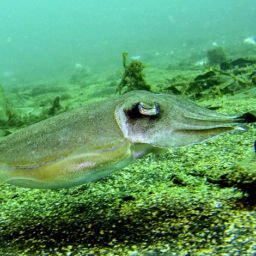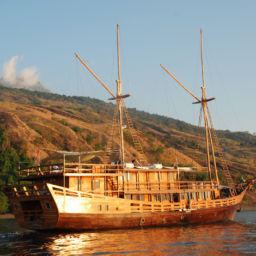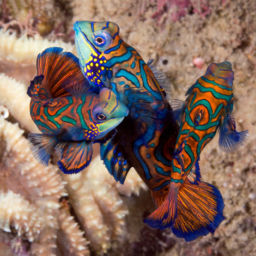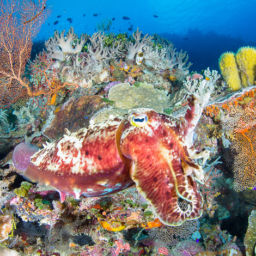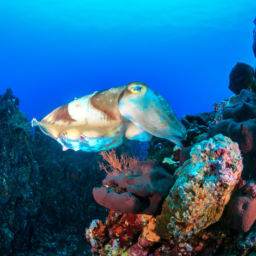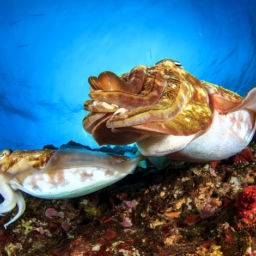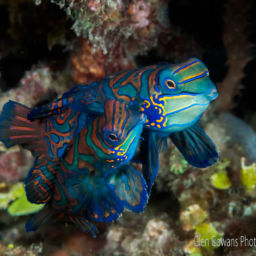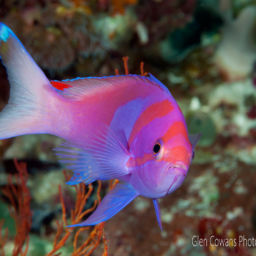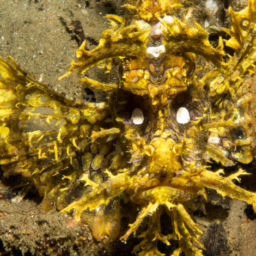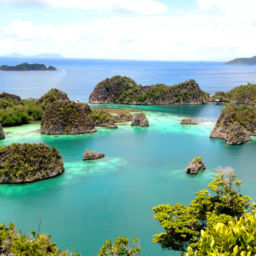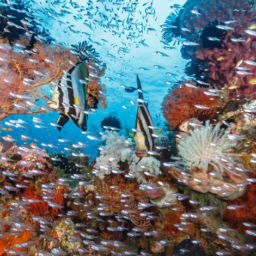Macro diving—searching for the some of the ocean’s smallest critters—is one of diving’s greatest pleasures. One of the main attractions is how incredibly bizarre and unique macro life can be. From cute seahorses to shrimp with elaborate headpieces, macro diving can reveal some of the world’s weirdest animals. And if you’re looking for the world’s widest array of tiny ocean weirdos, you won’t do better than the macro diving in Lembeh Strait, Sulawesi, Indonesia.
The stars of the show
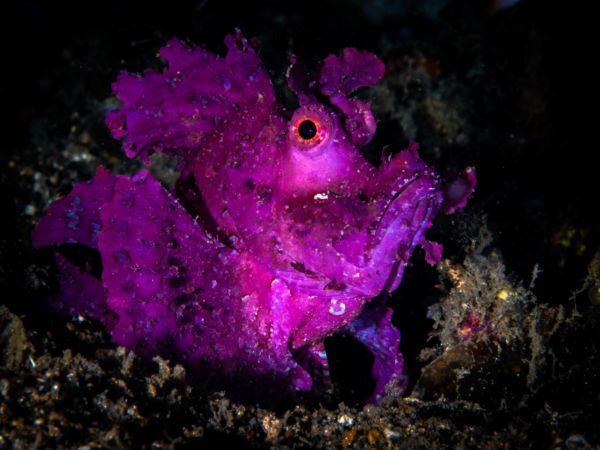
Whenever you hear people talk about must-sees when macro diving, one name pops up in nearly every conversation: the scorpionfish known as rhinopias. This type of fish appears in a range of different sizes and colors, all of which are utterly magnificent. Spending its life as an ambush predator on the ocean floor, rhinopias blends in well with its surroundings, waiting patiently for small animals to stray a little bit too close. Once in range, the rhinopias quickly snaps up the unfortunate critter with an all-encompassing gulp.
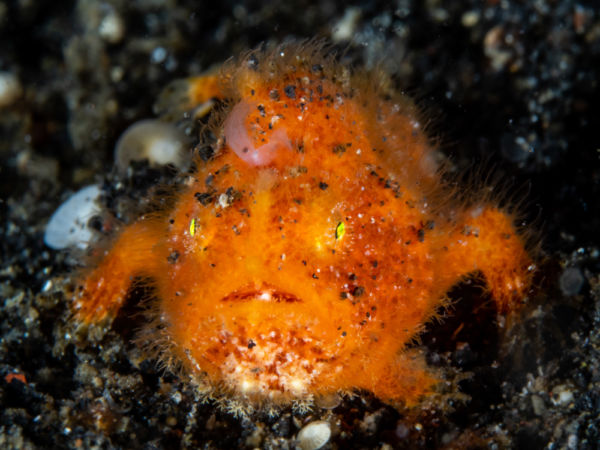
Another favorite of macro enthusiasts is the frogfish, a type of anglerfish. Frogfish are the not too distant cousins of the aforementioned rhinopias. They too spend most of their lives on the ocean floor, consuming prey with giant gulps. However, instead of lookin magnificent, divers often describe them as being so ugly they’re cute. Often covered in wart-like patterns or streaming ‘hair,’ their laser focus on their prey will make you glad you’re not a tiny edible fish. Because they’re an anglerfish, frogfish also have a small lure atop their heads, which they flop back and forth in order to catch unsuspecting prey, much like a fisherman—hence their name.
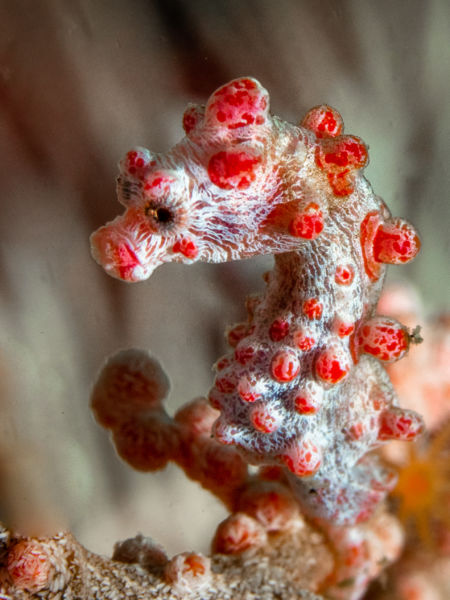
One of the cutest macro stars is the pygmy seahorse, which photographers often covet as the ultimate macro subject. These tiny seahorses average around 1-2 centimeters, and they’re well worth seeking out, usually with the eyes of a seasoned guide. Living among amazingly vibrant fan corals, which they match almost perfectly, pygmy seahorses can be extremely hard to spot. When viewing them or trying to take a photo just remember that you can easily stress the coral polyps that they live among, not to mention the seahorses themselves, so remember not to touch and to be gentle and kind.
The surprise performers
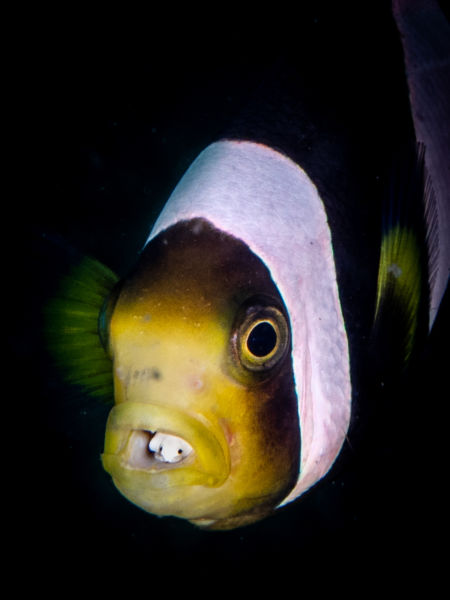
Lembeh Strait not only hosts famous macro critters but also produces a range of unexpected surprises. One secret of the strait, the anemonefish parasite, is known for gruesomely cutting off the tongue of its host and taking its place within the anemonefish’s mouth. These parasites are amazing to see, primarily due to their tiny black eyes, which look straight out of the anemonefish’s mouth.
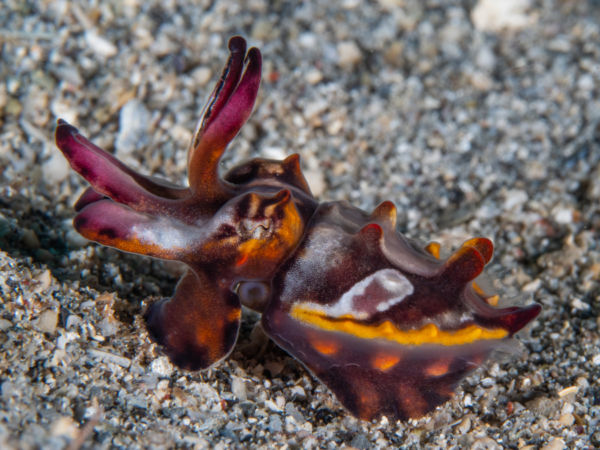
The flamboyant cuttlefish is another lesser known—but just as incredible—highlight of macro diving in Lembeh Strait. With vivid pink and purple displays that ripple across their tiny cephalopod bodies, they are absolutely stunning to behold. Go at the right time of year and you may even be lucky enough to see a few babies still encased in their eggs.
What to take
When macro diving in Lembeh Strait, bringing a camera is definitely top of the list. And one of the best things about macro photography is that you don’t need a fancy camera or enormous lights to get a decent shot of your favorite critter. Using the in-built flash or a small torch will give most modern point-and-shoot cameras enough light. Be warned however that you may develop an addiction to underwater photography.
It’s also a good idea to bring a muck stick, whether you’re a photographer or not. These skinny metal sticks are not meant to poke or prod animals, but rather to allow you to remain still on the sandy seafloor when observing a sea creature. Without them divers often risk bumping into delicate corals or crushing unsuspecting animals with their fins while trying to maneuver. When used correctly, these sticks help protect the delicate ecosystem.


